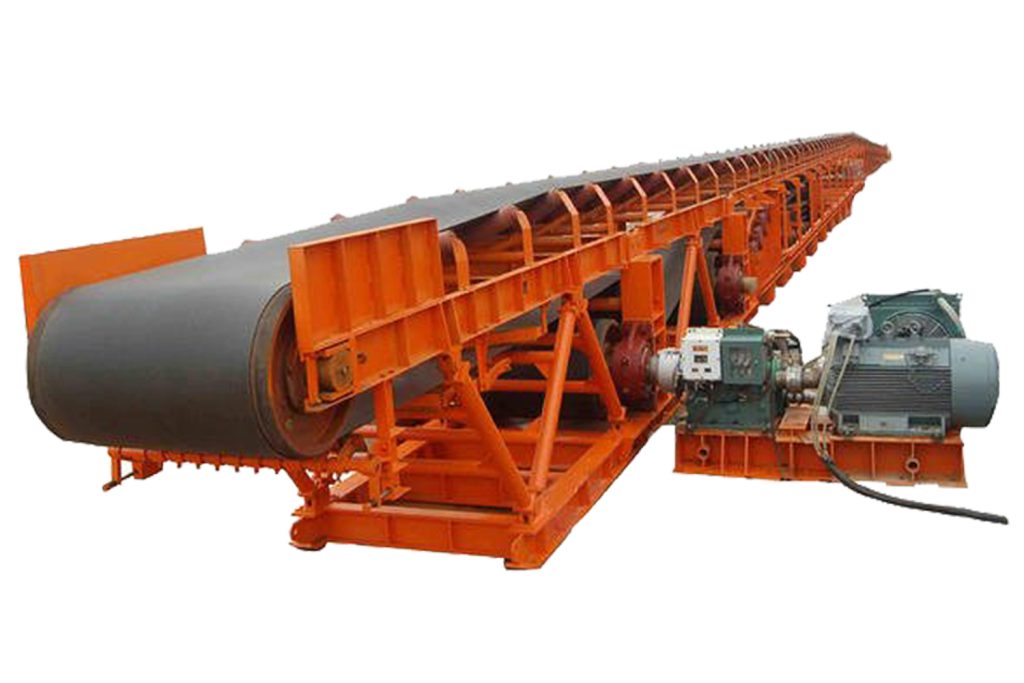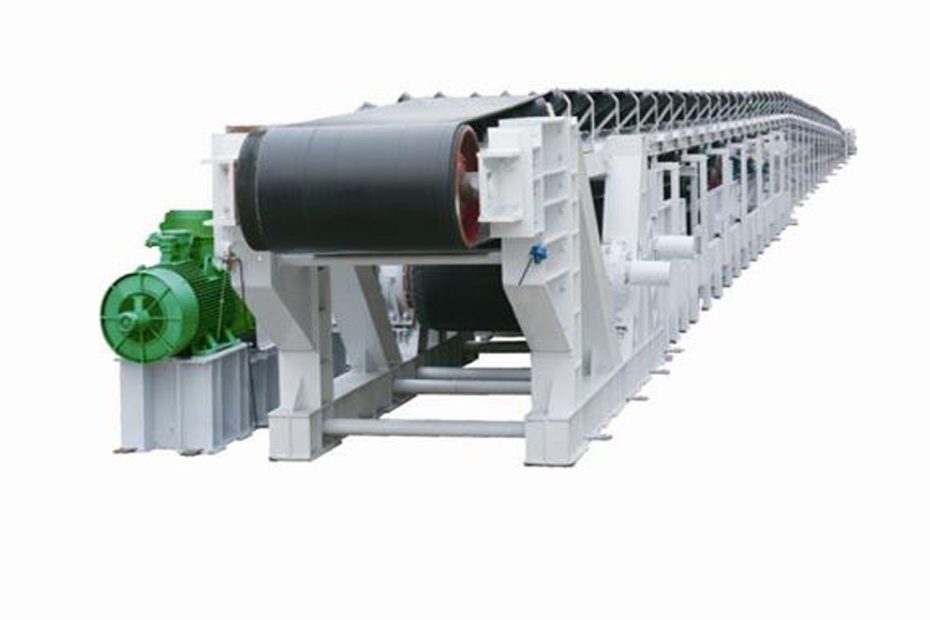The belt conveyor uses a closed annular conveyor belt that surrounds and is tensioned on the driving wheel and tensioning wheel as a load-bearing, pulling and transporting material component. Material transportation is realized through the continuous operation of the conveyor belt.
During the working process of the belt conveyor, materials enter the conveyor belt through the feeding device. Due to the continuous operation of the conveyor belt, the materials are transported to the unloading point, and then the unloading device is used to unload the materials. After unloading, the empty belt passes through the lower part Empty section bandback.
The belt conveyor should follow the principle of “start without load and stop without load” when operating, that is, start when there is no material on the conveyor belt, and then feed the material after the conveyor runs normally; the conveyor must stop feeding before stopping. and unload all materials on the conveyor belt.
The causes and treatment methods of these six types of failures
The common failures of the belt conveyor are: conveyor belt deviation, conveyor belt slippage, bearing heating, idler rollers not rotating, conveyor belt tearing, conveyor belt joint tearing, etc. The reasons and solutions for these faults are introduced below.
Conveyor belt deviation
The main reasons and troubleshooting methods for the deviation of the conveyor belt:
- It may be that the drive roller and tension roller (or head and tail roller) devices are not parallel. At this time, the position of the drive roller bearing should be adjusted or the tension roller device should be adjusted to make them parallel. If the conveyor belt deviates to the right, tighten the right screw; if it deviates to the left, tighten the left screw.
- It may be caused by the incorrectness of the idler roller (that is, the axis of the idler roller is not perpendicular to the center line of the conveyor). At this time, the idler roller bracket that is running off to one side should be moved forward along the running direction of the belt.
- It may also be that the joint of the conveyor belt is not correct, and the machine head should be reconnected at this time.
- It is also possible that the feeding position is uneven, and the feeding position should be adjusted at this time.
- It is also possible that the installation of the rack is uneven, and the rack should be laid flat at this time. 2. Conveyor belt slipping
The main reasons and troubleshooting methods for conveyor belt slippage:
- It may be that the tension of the conveyor belt is not enough. At this time, the tensioning device should be adjusted to tighten the conveyor belt.
- It may be that the surface of the roller is too smooth. At this time, a layer of glue can be covered on the wheel surface.
- It may also be caused by the failure of the roller bearing to rotate. At this time, the bearing should be disassembled, cleaned, refueled or replaced.
- It may also be that the conveyor is overloaded, and the conveying volume should be adjusted at this time.
Bearing heating
The main causes and elimination methods of bearing heating:
- It may be caused by lack of oil, and you should refuel in time at this time.
- It may be that the oil hole is blocked or there is dirt in the bearing. At this time, the oil hole should be dredged, and the bearing should be removed and washed.
- It may also be that the bearing bush or the ball is damaged. At this time, the bearing bush or rolling bearing should be replaced in time.
- It may also be that the bearing is installed improperly, and the installation should be readjusted at this time.

The roller does not turn
The main reasons and troubleshooting methods for the non-rotation of the idler roller:
- It may be that the conveyor belt is not in contact with the idler, and the position of the idler should be adjusted at this time.
- It may also be that the bearing is short of oil, too dirty or damaged. At this time, the bearing should be repaired or replaced in time.
Conveyor belt tear
The main reasons and troubleshooting methods for the tearing of the conveyor belt:
- It may be that there are large foreign objects with sharp corners (such as metal parts or bamboo chips, etc.) mixed in the material. This material is stuck between the feed hopper or the baffle conveyor belt and cuts the conveyor belt longitudinally. Clear out the foreign matter mixed in, and strengthen daily management.
- It may also be caused by the parts stuck in the joint after the conveyor belt deviates, so it should be corrected in time as soon as the deviation is found.
The conveyor belt joint is torn
The main reasons and troubleshooting methods for the tearing of the conveyor belt joint:
- It may be caused by the poor installation quality of the joints. At this time, the joints should be reconnected as required.
- It may also be because the tension device is adjusted too tightly, and the tension device should be loosened at this time.
- It may also be caused by too much sagging of the conveyor belt, and the length of the conveyor belt should be adjusted in time.
Conclusion
Different failures will occur during the operation of the belt conveyor system , and regular maintenance and repairs are required daily to ensure long-term stable and reliable operation of the equipment and smooth operation of production.
